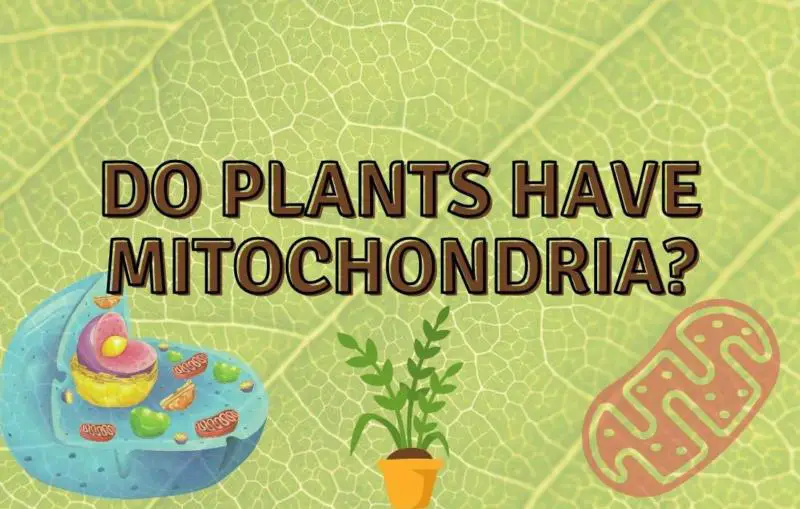All cells need a constant flow of energy to maintain their metabolism and to grow. While prokaryotic cells such as bacteria do not need separate organelles to satisfy their energy demands, all eukaryotic cells do (with very few exceptions – read on!).
Eukaryotes like plants, animals, and protists need mitochondria for their survival. They all have mitochondria because they share a common ancestor that had mitochondria.
Plants have a wide array of different organelles inside their cells that perform various functions for them. Some of these organelles are the chloroplast, nucleus, and other less-known organelles such as plastids.
And like all living organisms, plants need to generate energy and for this, they use their chloroplasts and mitochondria.
While chloroplasts are unique and important organelles for plans, they cannot rely on the sun exclusively to supply them with energy.
Mitochondria are separate power plants of the cell that receives metabolites from the cytoplasm (the liquid space in which they flow around inside the cell) and use oxygen to turn these metabolites into energy in the form of ATP!
Sugar + O2 –> CO2 + ATP (energy)
This is exactly the same way mitochondria work in animals.
Where are mitochondria found in plants?
Mitochondria are fascinating organelles that look almost like bacteria floating around in the cell – keep this in mind as we will get into the reason for this later!
Like in animals and microbial eukaryotes, the mitochondria are found in the cytoplasm of the cell along with other organelles. If you want a recap of the different cell types and their organelles, take a look at this article I wrote recently.
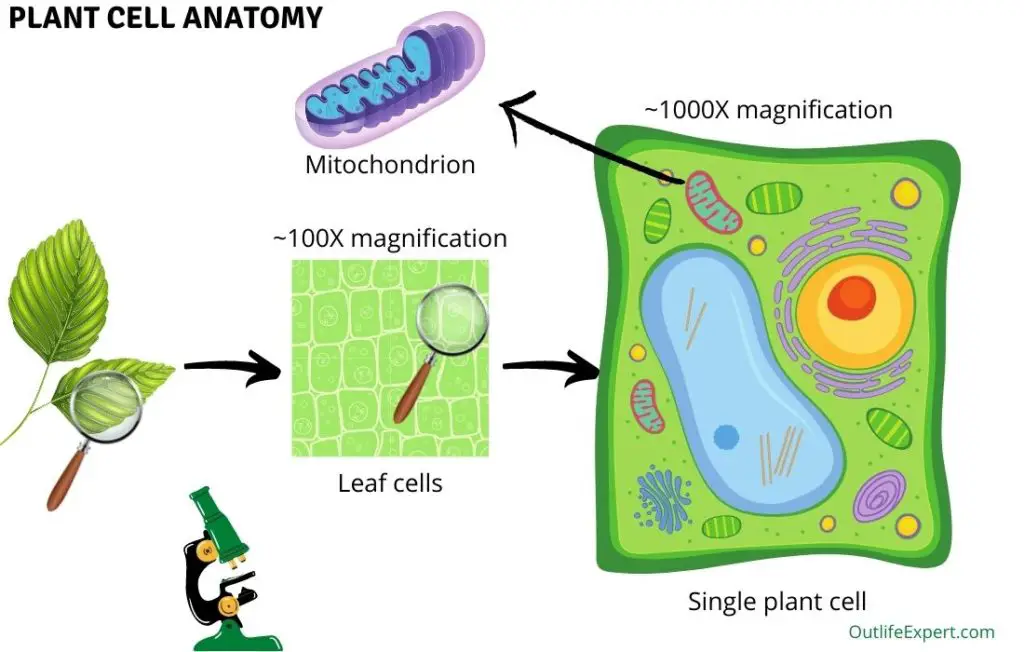
A plant cell can be seen fairly easily even with an inexpensive light microscope. However, the mitochondria cannot be viewed directly unless stained with a specific dye as they (unlike the bright green chloroplasts) are colorless otherwise.
While one mitochondrion is around 1 µm in length, the whole plant cell is around a hundred times bigger than that (on the shortest side!).
Why do plants need both chloroplasts and mitochondria?
Mitochondria and chloroplasts have the same end products in the form of cellular energy, so why do plants have both?
The reason is, firstly, that plants were actually “born” with mitochondria as they stem from a cell similar to animals (or Euglena?), and perhaps more importantly – because they actually need them to survive!
Why? Because the sun does not always shine on plants and they need a constant supply of energy to survive.
Because most plants experience both day and night, as well as moments of overcast weather, they cannot rely on photosynthesis as their sole source of energy.
Think of it as a house where the power is provided by solar panels in the day and perhaps a generator or stored battery power at night.
Therefore, just like humans and other animals, plants can always use their mitochondria to convert stored fat and sugars into energy – even when the sun is absent or insufficient.
For example, a seed (grain or potato) is a form of energy package that allows the seedling to convert some of the stored starch into sugars that the mitochondria of the plant cells can then convert to energy used for the growth and maintenance of the cells.
When the seedling grows big enough to fold out its leaves, and the starch of the seed is almost gone, photosynthesis takes over as the main source of energy fuelling the continued growth of the plant.
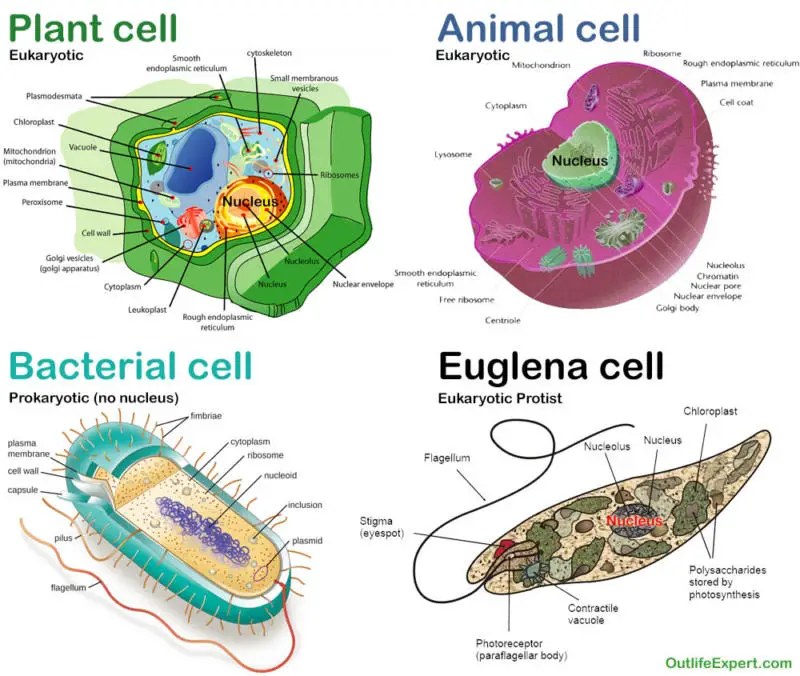
How did plants obtain their mitochondria?
In order to understand where mitochondria came from and how they ended up in plants, we need to look quite far back in time – more than 1.5 billion years!
Believe it or not but long before plants and animals came into existence, there were only bacteria and simple eukaryotes on earth.
These simple life forms were swimming around together in a soup resembling today’s oceans, using inorganic chemicals, rather than oxygen, as an energy source!
Back then, they were all separate entities competing for nutrients and space. With no thought to what they could achieve together if just they decided to collaborate.
However, at some point in history, a cellular structure developed likely from the fusion of simpler life forms such as Archaea, bacteria, viruses, or even empty membranes.
This proto-eukaryotes may have looked like some of the protozoa we know today including Paramecium, Blepharisma and Euglena species.
These cell feed by engulfing other organisms and may have taken up other primordial life forms from which the first organelles, such as the nucleus and endoplasmic reticulum, have evolved!
According to the “endosymbiotic theory”, mitochondria are aerobic (means they are able to use oxygen to generate energy) bacteria that were engulfed by these early eukaryotic organisms.
This is designated “the first endosymbiotic event” and happened around 1.4 billion years ago when an aerobic bacterial cell was engulfed by the primordial eukaryote.
For this reason, mitochondria are sometimes called “a cell within a cell” and this valuable collaboration is indeed what has eukaryotes to generate the energy required for the complex cellular functions we have today!
Interestingly, mitochondria do not have a cell wall as most bacteria do, suggesting that they have slowly lost their cell wall through adaptations to an intracellular lifestyle!
This adaptation can be compared to the the way animal cells have lost their cell wall as a result of living inside a multicellular body!
At this time, plants did not yet exist, but a similar event would divide the path for our primordial eukaryotic ancestor.
This happened when plants and (the ancestor of) animals diverged around 1.5 billion years ago.
This event is also referred to as the “the second endosymbiotic event” where a green photosynthetic bacterium (like the cyanobacteria we know today) merged with the cell already carrying mitochondria.
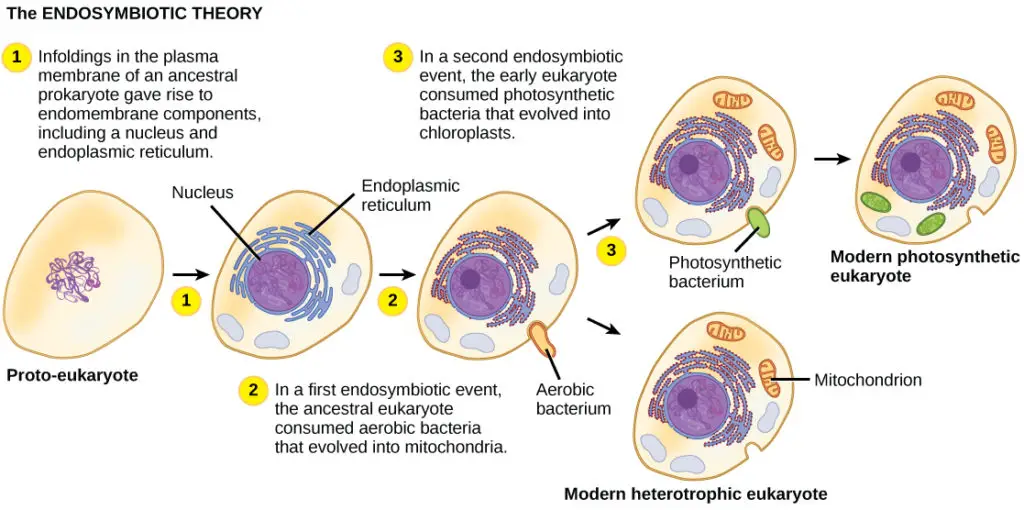
Are plant mitochondria different from animal mitochondria?
Animal mitochondria and animal mitochondria come from the same ancestral mitochondria, but they have evolved slight differences along the way.
For example, a plant cell relies on different molecules for its protection against praetors such as cyanides. Cyanides inhibit the respiratory process taking place in mitochondria and are therefore very toxic to the mitochondria and the cell as a whole.
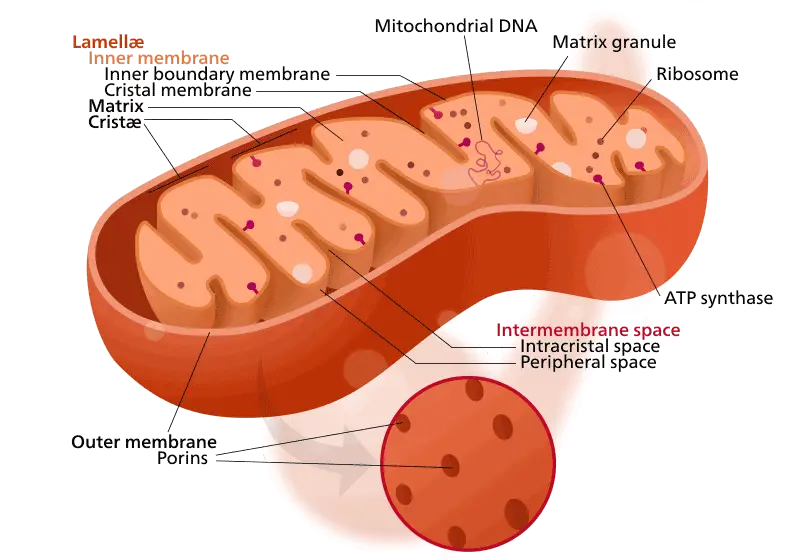
Figure credit: Kelvinsong; modified by Sowlos, CC BY-SA 3.0.
Due to this long-term exposure to cyanide, the mitochondria of some plant species have evolved to be more resistant to cyanide over time.
And because cyanide is present in the cells of plants but not animals, this has led to significant differences in adaptation towards this compound, whereas the energy metabolism as a whole is unchanged.
Another important difference between plant and animal mitochondria is that the fatty acid metabolism is partly outsourced to glyoxysomes in plants.
Do plants have more mitochondria than animals?
No, animal cells generally have more mitochondria than plant cells.
While plants typically have around 200-600 mitochondria per cell, animal cells can have more than 2000 mitochondria.
The reason for this difference is mainly due to:
- Animals do not have chloroplast to supplement their energy needs with.
- Most animals need to move and this requires extra energy.
It is also important to keep in mind that the number of mitochondria differs between cell types. For example, muscle cells that need to generate immense amounts of energy, have a lot of mitochondria along with other tissues with high energy requirements such as the liver and brain.
On the other hand, red blood cells (erythrocytes or RBCs) do not contain mitochondria at all, and would therefore be an exception to the rule of animals having more mitochondria than plants.
Are there any other eukaryotic cells without mitochondria?
Yes! Apart from red blood cells, there is one single-celled eukaryotic organism that appears to lack mitochondria altogether.
In fact, it is a whole group (genus) of organisms called Monocercomonoides. These single-celled flagellated eukaryotes (protists), seem to have evolved from the same mitochondrion-carrying ancestor as animals and plants, but have lost their mitochondria along the way!
So how do they generate energy then?
Although few ways are as efficient as the way mitochondria do it, living cells have many ways of generating energy. Instead of using oxygen they can for example use other molecules to accept the electrons that (the movement of) generates energy.
In the case of Monocercomonoides, they prefer to use a mitochondrion-independent energy pathway where they use enzymes to break down the amino acid arginine, which results insufficient energy for their survival (see this article for more information).
Can mitochondria survive outside the cell?
No, they are too co-evolved with the eukaryotic cell to survive on their own anymore!
Since they were independently replicating bacteria, mitochondria have evolved together with their eukaryotic host cells to a degree where they are no longer able to sustain themselves.
Like animal cells that live without a protective cell wall within a protected body, mitochondria have also lost their cell wall and would be far too vulnerable to exists in the hostile environment outside the cell!
Whereas mitochondria are physically independent organelles in the cell and even encode their own DNA, they do need the protein expression machinery of the “host” cell and are therefore no longer autonomous entities.

